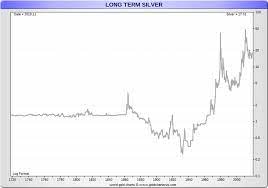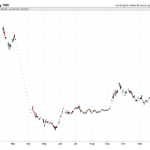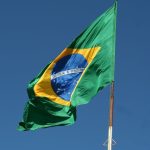Silver Price in 2001
In the year 2001, the average price of silver was $4.37 per troy ounce. The year started with a price of $4.59 per ounce, and despite some fluctuations, it ended at $4.52 per ounce on December 31st.
The year 2001 was a significant period for the global economy, marked by various events that had a profound impact on different industries, including the silver market. Throughout the year, the prices of silver fluctuated, with spikes and declines recorded in different months.
However, there is a belief that the terrorist attacks of September 11th had a significant impact on the silver market, leading to a spike in prices that lasted for several days.
This article seeks to investigate the truth of this theory by exploring the fluctuations and spikes in silver prices in 2001. The article will take an objective, analytical, and data-driven approach to present the facts and factors that influenced the silver market during this period.
In addition, the article will examine the aftermath of the 9/11 attacks on the precious metals industry, including its short-term and long-term effects on silver prices.
By providing an in-depth analysis of silver prices in 2001, this article aims to contribute to a better understanding of the factors that impact the silver market and the broader economy.
January to June Prices
The period from January to June 2001 saw fluctuations in silver prices, with daily prices listed in US dollars per troy ounce on SD Bullion’s website ranging from $4.07 to $4.65 per ounce.
Silver price trends during this period were influenced by a number of factors, including the performance of the US dollar, economic data releases, geopolitical events, and supply and demand dynamics. For example, a weaker US dollar tends to boost silver prices, as it makes the metal cheaper for investors holding other currencies. Economic data releases, such as GDP growth figures and inflation data, can also impact silver prices, as they affect investor sentiment and expectations for future interest rate movements. Geopolitical events, such as the ongoing conflict in the Middle East, can also impact silver prices, as investors seek safe-haven assets in times of uncertainty. Finally, supply and demand dynamics can also impact silver prices, as changes in production levels, inventories, and industrial demand can all affect the balance between supply and demand in the market.
Overall, the silver market during the first half of 2001 was characterized by volatility and uncertainty, with prices fluctuating in response to a range of different factors.
While prices remained relatively stable during the early part of the year, they began to pick up in May and June, as investors sought to hedge against potential risks and uncertainties in the global economy.
Despite these fluctuations, however, silver prices remained relatively low compared to historical highs, reflecting the ongoing challenges faced by the precious metals market.
September 11th Impact
Following the September 11th terrorist attacks, the precious metals industry experienced a period of instability and uncertainty. The impact on the global economy was significant, with stock markets plummeting and demand for safe-haven assets increasing. The silver market was not immune to these reactions, and prices saw significant fluctuations in the aftermath of the attacks.
Several factors contributed to the silver market’s reactions. First, investors sought out safe-haven assets like silver as a hedge against the uncertainty and volatility in the stock market. This increased demand drove up prices in the days immediately following the attacks. However, as the global economy continued to suffer, demand for silver decreased, and prices eventually began to decline.
Additionally, the attacks disrupted the supply chain for precious metals, causing logistical issues and delays in delivery. Overall, the September 11th attacks had a significant impact on the global economy and the silver market, highlighting the interconnectedness of these industries and the importance of monitoring external events when analyzing market trends.
October to December Prices
From November to December 2001, there was a significant surge in the value of silver, with prices fluctuating between $4.07 and $4.54 per troy ounce. One of the factors that contributed to this price increase was the weakening of the US dollar, which made silver a more attractive investment option.
Additionally, there was increased demand for silver in the industrial sector due to the growth of the electronics industry, particularly in Asia. The rise in silver prices during this period was also influenced by the geopolitical tensions that followed the September 11 terrorist attacks, which fueled investor demand for safe-haven assets.
Despite the price increase in the final months of 2001, the overall trend of silver prices in that year was relatively stable, with prices ranging between $4.07 and $4.65 per troy ounce. The aftermath of the September 11 attacks did lead to a brief spike in silver prices, but the market soon stabilized.
Looking back, the price trends in 2001 were mainly driven by market factors such as the strength of the US dollar, global demand for silver, and geopolitical tensions. These factors continue to play a role in determining the value of silver today.
Frequently Asked Questions
How did the silver prices in 2001 compare to prices in previous years?
Historical trends show that silver prices in 2001 were lower compared to the previous year, with an average price of $4.37 per ounce, while in 2000, the average was $4.95 per ounce. However, prices in 2001 were higher compared to the 1990s, where the average price was $4.11 per ounce.
What factors besides the September 11 attacks contributed to the fluctuations in silver prices during this time period?
Market speculation and supply and demand were major factors contributing to the fluctuations in silver prices during 2001. One interesting statistic is that prices reached a high of $4.60 on September 21, following the September 11 terrorist attacks.
What other precious metals experienced price fluctuations during this time period, and how did they compare to silver?
In comparison to gold and platinum, silver experienced greater price fluctuation in 2001. The impact of the mining industry on precious metal prices varied, with gold and platinum prices influenced more by production and supply concerns, while silver prices were more affected by demand fluctuations.
How did changes in the global economy impact silver prices in 2001?
The global economic impact on commodity markets was evident in the fluctuations of silver prices in 2001. The average annual price of silver decreased by 11.5% due to weakened demand from the industrial sector, increased mining production, and a strengthening US dollar.
Are there any predictions or forecasts for silver prices in the coming years based on the trends observed in 2001?
Historical analysis of silver price trends in 2001 suggests that predicting future prices is challenging due to the complex interplay of global economic factors. While some analysts forecast a steady increase in prices, others predict volatility and fluctuations in the coming years.





